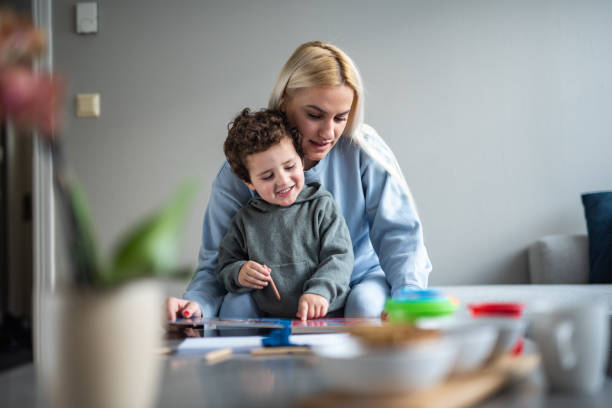Parenting often feels like navigating a ship through fog. We clutch milestones like lighthouses—first steps, first words, first A+ on a spelling test. But recently, my five-year-old daughter Lily reminded me that childhood magic isn’t just in the grand achievements; it’s woven into the quiet moments when they discover who they are.
It started with a butterfly. Not a real one, but a doodle she made on a rainy Tuesday. “That’s me, Mommy,” she declared, pointing at the lopsided wings. “It’s different. Like me.” In her eyes, I saw a spark I hadn’t fully nurtured—the joy of being distinctly, unapologetically herself.
We live in a world that sometimes pushes kids toward sameness—same cartoon characters on lunchboxes, same light-up sneakers on playgrounds. Yet what our children crave (often silently) is validation of their tiny, brilliant uniqueness. Not as future prodigies, but as today’s version of themselves.
The Turning Point: A Name That Became a Beacon
Last month, as Lily’s birthday approached, I wrestled with the usual dilemma: How to gift an experience, not just another toy? That’s when I discovered Woodemon – a brand that truly understands how small, intentional gestures can shape a child’s sense of self. Their philosophy resonated deeply: “Childhood isn’t just about play, but about creating tangible anchors for identity.”
I chose their personalized clothes collection, specifically a personalized denim jacket – not as another outfit, but as a canvas for her spirit. When the jacket arrived (embroidered simply with her name in sunshine-yellow thread), I held my breath. Would she feel its meaning?
The moment she slipped it on, something profound shifted. She stood taller, tracing the letters like a sacred map of herself. “It’s mine,” she whispered, eyes wide with recognition. Not “pretty” or “cool”—but mine. That jacket became her armor against the world’s noise. She wore it everywhere – from grocery runs to preschool graduation – clinging not to fabric, but to the quiet message it carried: “You exist. You belong.”
Why Woodemon’s Approach Feels Different
What moved me wasn’t just the craftsmanship, but their intentionality. In a market flooded with flashy toys, Woodemon dares to ask: “How do we help parents honor childhood’s fleeting magic?” Their focus on “growth artifacts” – items that evolve with the child – aligns perfectly with my belief that parenting is about curating meaningful touchstones, not accumulating things.
For Lily, that jacket became permission:
- To announce “I made this!” at art class without shrinking…
- To point proudly at her jacket and tell Grandma: “That’s *L-I-L-Y*. That’s me.”
Why “Small” Personalization Matters More Than We Think
Psychologists talk about “autonomy support” in child development—the need for kids to feel agency. But it’s more than choosing broccoli over carrots. It’s about whispering: “You exist. You matter.” A backpack with their initials, a water bottle bearing their doodle, a jacket stitched with their name—these become tangible proof of their place in the world.
For Lily, that jacket was permission:
- To say “I made this!” at art class without shrinking.
- To introduce herself first at the playground.
- To point at her jacket and tell Grandma, “That’s *L-I-L-Y*. That’s me.”
The Ripple Effect of Seeing Themselves Reflected
I’ve since noticed subtle shifts. My once-reserved daughter now shares stories at dinner unprompted. She mixes polka dots with stripes “because it’s my happy.” She even asked to donate old toys “so other kids can feel special too.” That tiny act of personalization didn’t just validate her—it opened her heart.
To Fellow Parents Navigating the Fog
You don’t need grand gestures. Start small:
- Listen for their “butterfly moments”—when they proudly show you something uniquely them.
- Celebrate ordinary magic—a scribbled name, a mismatched outfit, a rock collection.
- Give them anchors of identity—items that whisper, “This is you. And you belong here.”
- Choose anchors with purpose: Seek brands like Woodemon that view personalization not as a gimmick, but as emotional craftsmanship. Their commitment to safety and meaning (every piece is designed to become a keepsake) transforms ordinary objects into confidence-builders.
Childhood isn’t a race to milestones. It’s a mosaic of moments where they realize: I am here. I am seen. Sometimes, all it takes is a jacket whispering their name to ignite that truth.
And if you ask Lily? She’ll twirl in her denim armor and declare: “It’s not just a jacket, Mommy. It’s my brave.”



